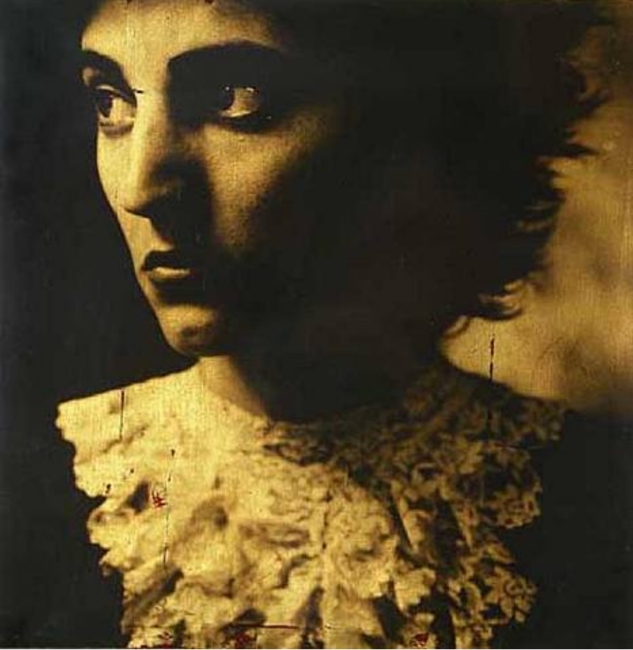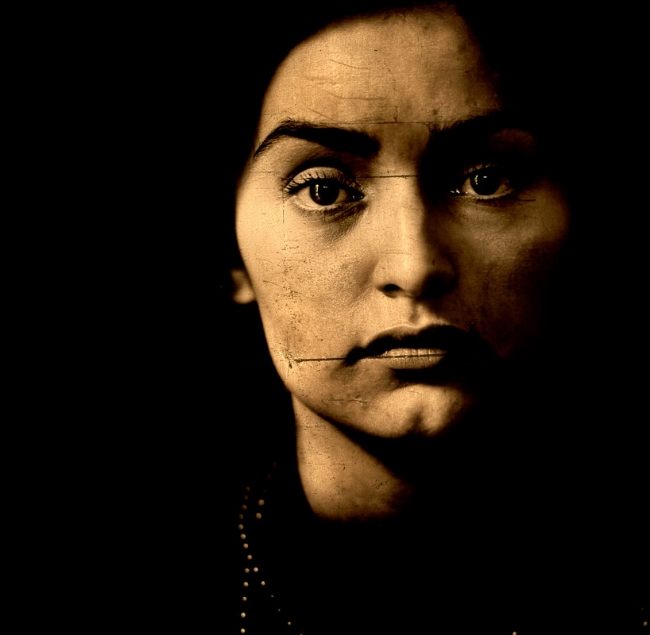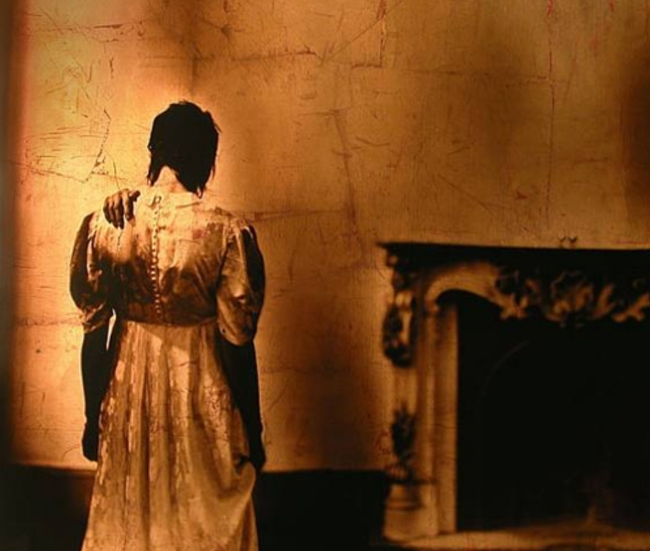Luis González Palma is best known for his strange, quiet portraits of the Mayan and mestizo women in his native Guatemala. There is a contradictory quality to many of these portraits. The subjects are women who belong to cultures that have been marginalized, yet the photographs have a distinctly European–almost a Victorian–appearance. Even when dressed in their native clothing, the subjects are often posed in a way that negates their nativeness. Despite that, the faces of the subjects often seem to be challenging the viewer, as if they’re proclaiming their refusal to disappear totally.
González Palma is himself of mestizo heritage. Born in 1957, he studied architecture and cinematography at the Universidad de San Carlos de Guatemala before turning to still photography. And there he found himself a home.

All of González Palma’s work is shot in black and white, then hand-tinted in sepia tones and treated with bitumen (leaving only small parts such as the whites of the eyes uncovered) to create an aura of antiquity. He frequently heightens that feeling by distressing the photographs–scratching them, tearing them, creasing them, defacing them in a variety of ways. The result is an image that looks like it’s spent the last half century jammed in a drawer with other artifacts.

In the last few years González Palma has turned his eye from strange, quiet portraits to strange, quiet interior photographs. The true degree of the eccentricity of the images only becomes apparent on closer inspection. Take this once-grand room, for example. It’s empty of furniture except for an antiquated single-size bed with a metal frame. It takes a moment to realize the bed frame appears to continue on the other side of the wall.

His body of work has been described as existing on both “the bright and dark sides of reason.” I’m not at all sure what that means, but it seems somehow appropriate. It’s clear González Palma’s photography extends into the realm of metaphor. There is more to his photographs than what appears in his photographs.
He is the polar opposite of a documentary photographer. He has no interest in showing us reality; his interest is in showing us what lies under reality. His photographs are deliberately obscure, intentionally laden with veiled meaning, gravid with mystery. There are clues here, but what they mean is anybody’s guess. It’s not even clear what elements in the photograph are clues and what are merely the result of the artist’s whim.

Obviously, González Palma means for the viewer to experience a moment of disorientation followed by a moment of discovery, followed by still more disorientation. He clearly wants the viewer to ask questions. What does this photograph mean? Does it mean anything at all? Is there a secret message in the title?
González Palma gives us no answers. He only leaves us with an uneasy feeling and still more questions. It is a most beautiful confusion.
